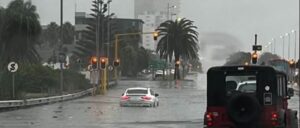In a recent State of the Nation Address, President Cyril Ramaphosa articulated a definitive strategy aimed at terminating the persistent load shedding plaguing the nation. The president underscored the government’s unwavering dedication to this cause, facilitated by the concerted efforts of the National Energy Crisis Committee.
“We set out a clear plan to end load shedding, which we have been implementing with a single-minded focus through the National Energy Crisis Committee,” Ramaphosa articulated.
The committee is resolutely focused on integrating substantial new power capacities into the national grid, courtesy of private sector investments. This initiative was significantly bolstered last year through a comprehensive debt relief package for Eskom. This financial intervention is set to revitalize Eskom’s capacity for maintenance and enhance its transmission infrastructure, thus ensuring its long-term viability.
“Through all of these actions, we are confident that the worst is behind us and the end of load shedding is finally within reach.”
Economic Impact of Load Shedding
Research conducted by Eighty20, a consumer analytics firm, revealed that South Africa experienced blackouts on approximately 90% of days in 2023, a stark increase from previous years. This persistent energy shortfall has levied a hefty economic toll, with estimates suggesting losses exceeding R500 billion in 2022 alone, a figure expected to have escalated further over the past year.
Despite these daunting statistics, President Ramaphosa remains optimistic. He highlighted significant strides in renewable energy, with over 2,500 MW of solar and wind energy recently added to the grid—a figure that is set to triple with ongoing projects. The nation has seen a surge in rooftop solar installations, buoyed by tax incentives and financial aids, alongside regulatory reforms that have paved the way for over 120 new private energy projects.
“We are going to build more than 14,000km of new transmission lines to accommodate renewable energy over the coming years,” affirmed Ramaphosa.
The president’s vision extends beyond immediate solutions, eyeing a future where renewable resources drive not only energy sustainability but also economic revitalization. He foresees the creation of thousands of jobs across various sectors, including renewable energy, green hydrogen, and electric vehicles, among others.
A Future Powered by Green Energy
A noteworthy development in this green transition is the establishment of a Special Economic Zone in the Boegoebaai port in the Northern Cape, envisioned as a hub for green energy investment. This initiative has reportedly garnered substantial interest from the private sector, promising an influx of green hydrogen energy projects.
President Ramaphosa’s address paints a picture of a future where South Africa turns its abundant natural resources into engines of economic growth and environmental sustainability. Amidst challenges, the nation’s leadership is steering a course towards resilience and prosperity, aiming to leave the era of load shedding firmly in the past.

















